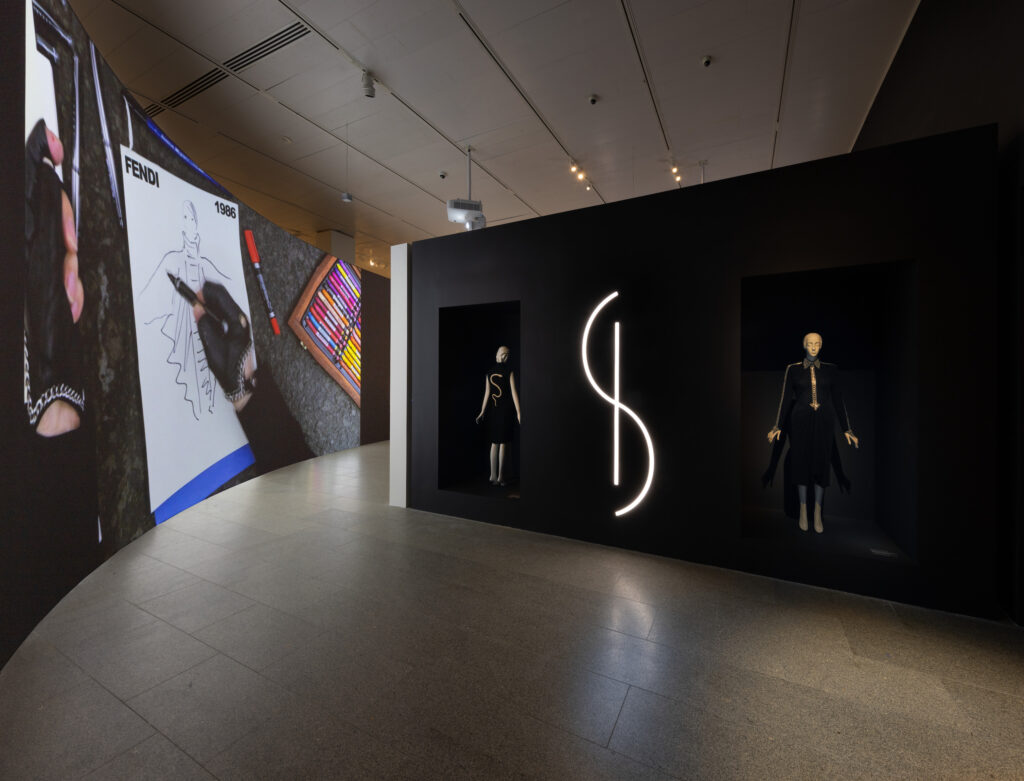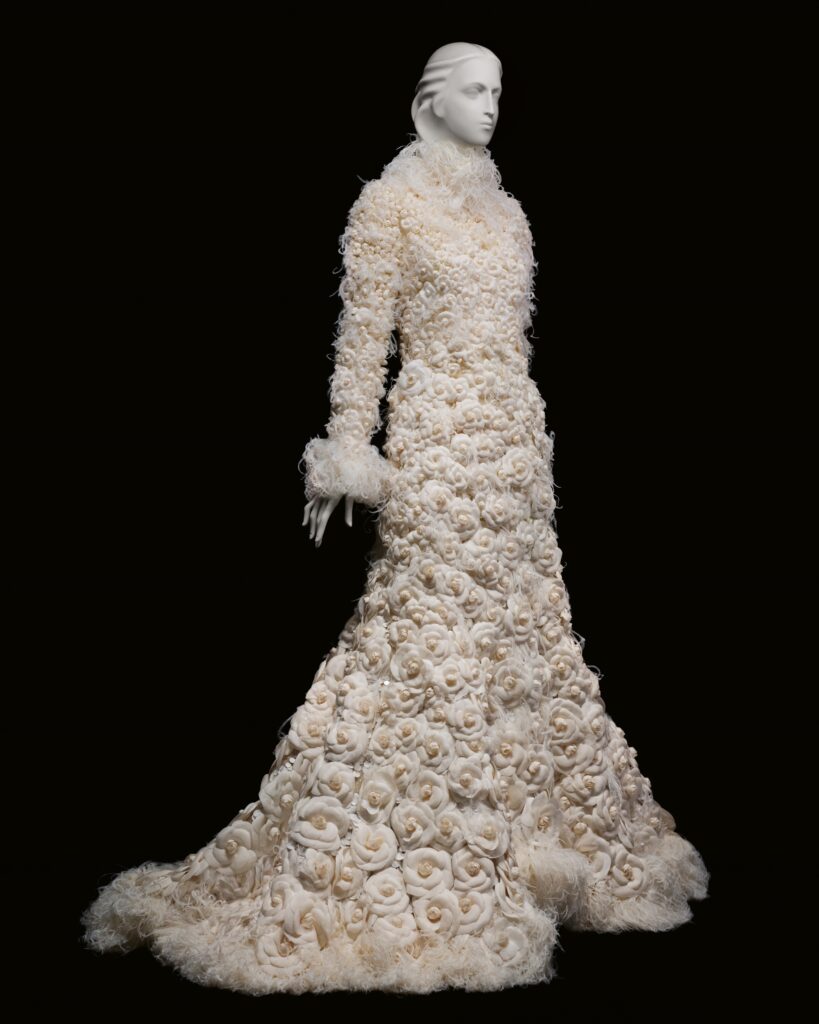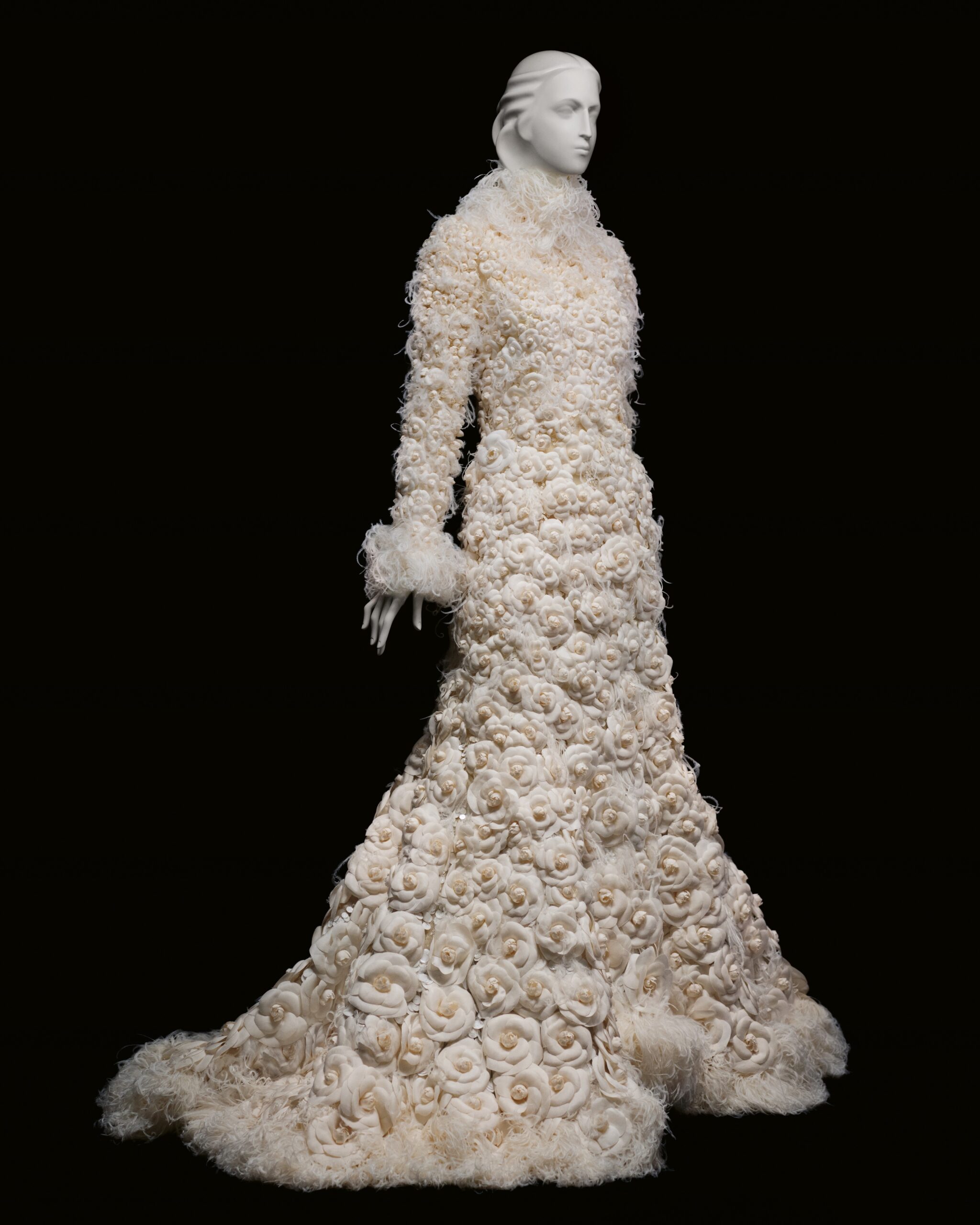Beginning on Friday, May 5th, The Met on Fifth Avenue will open up its door to let you into the Great Hall’s exhibition titled ‘Karl Lagerfeld: A Line of Beauty‘, first unveiled to great suspense this past Monday, at the hotly anticipated Met Gala. The display, designed by world-renowned architect Tadao Ando, centers around the late designer’s aesthetic vision and his unique working methodology. Lagerfeld often expressed his stylistic vocabulary through lines, meaning through repetitive patterns and conceptual themes that characterized his work across eras.

“Karl Lagerfeld was one of the most captivating, prolific, and recognizable forces in fashion and culture, known as much for his extraordinary designs and tireless creative output as his legendary persona,” Max Hollein, Marina Kellen French Director of The Met commented. With more than 200 pieces on display, audience members will be walking through Lagerfeld’s creative journey, from his early career in the 1950s to his final collection in 2019. Most of the creations will be accompanied by their original sketches to let the public see the genius behind the fabric. “This immersive exhibition unpacks his singular artistic practice, inviting the public to experience an essential part of Lagerfeld’s boundless imagination and passion for innovation,” Hollein concluded.

The theoretical concept of the show is inspired by 18th-century writer and artist William Hogarth’s book The Analysis of Beauty. Hogarth developed theories of art and aesthetics around his idea of the line of beauty, or the so-called serpentine line. It was described as an S-shaped curved line that represented both liveliness and movement and appeared within or as the boundary of objects. Yet, if Hogarth saw the serpentine line as the only expression of beauty and the straight line as an image of stillness and inactivity, Lagerfeld transformed these standards, revolutionizing our artistic principles. In his work, both the straight and serpentine lines became expressions of beauty and sources of inspiration for future artworks.
To Lagerfeld, the serpentine line signified the historicist, romantic, and decorative impulses, while the straight line indicated the modernist, classicist, and minimalist tendencies. Furthermore, these two were divided into nine consequent sublines–feminine and masculine, romantic and military, rococo and classical, historical and futuristic, ornamental and structural, canonical and countercultural, artisanal and mechanical, floral and geometric, and figurative and abstract–for a highly conceptual aesthetic outcome. To bridge these two dualities there were figurative “explosions”: garments that represent moments of convergence.

Perhaps, however, the sphere where the blending of these two opposite forces is mostly reflected in was Lagerfeld’s sketches. Drawing was, in fact, his primary mode of communication and the first step to bringing his idea from the abstract into the concrete. Then, the seamstresses would become the architects of Lagerfeld’s vision, translating his two-dimensional drawings into three-dimensional garments.

The essential role played by the tailors is highlighted in the exhibition with an introductory gallery exclusively dedicated to the premières d’atelier. “The exhibition explores Lagerfeld’s complex working methodology, tracing the evolution of his fashions from the two-dimensional to the three-dimensional. The fluid lines of his sketches found expression in recurring themes in his fashions,” Andrew Bolton, Wendy Yu Curator in Charge, The Costume Institute, said.

The complexity of Lagerfeld’s multifaceted design will fully shine through a series of on-camera interviews, conducted by French filmmaker Loïc Prigent, who followed and documented the late designer’s collections from 1997 to 2019–from Chanel, Chloé, Fendi, and Lagerfeld’s eponymous label premières. A video installation by filmmaker Baillie Walsh will also be giving never-before-seen archival footage of Lagerfeld, displayed across 81 iPhones (apparently, his primary mode of creativity).
Finally, Lagerfeld’s satirical wit–a line within itself–could not be missing. Whimsical garments and embroideries, as well as various self-representations of his black-and-white “uniform,” will underline the late designer’s razor-sharp and playful irony.

The exhibition will be on view at The Met Fifth Avenue through July 16, 2023. Much of the content featured in the exhibition is also now available on The Met’s website.
Discover More







